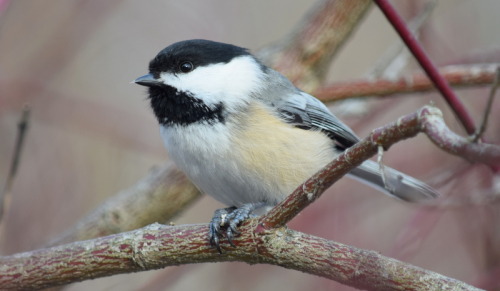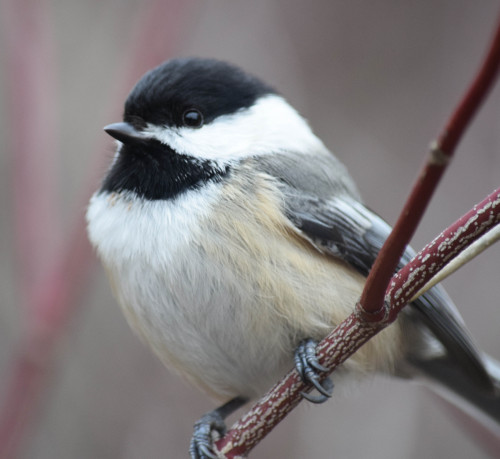The most adorable little brainiac! Chickadees may be tiny (only 11 grams!), but there’s a surp
The most adorable little brainiac! Chickadees may be tiny (only 11 grams!), but there’s a surprising amount of brainpower in that little head. Chickadees can make more than 15 different calls, communicating a wide array of information to flock members. The one that gives them their name is the famous chick-a-dee-dee-dee call, and it’s part of a sophisticated communication system. Variations in that alarm call can communicate the size and threat level of predators to other members of the flock, and those other chickadees then respond differently based on the threat (source). Even other species have learned to respond to chickadee alarm calls, although not to the same level of complexity.In addition, chickadees have incredible spatial memory. As the weather gets colder, chickadees cache food in hidden spots all over a large territory. These caches are vital for surviving the harsh winters in their northern range. Chickadees can remember hundreds of these hiding places, and they can remember them up to a month after hiding food! In fact, in the fall, the hippocampus portion of their brains (which is responsible for spatial memory) actually expands up to 30%, then reduces again in the spring when they don’t need to rely on their caches (source). Their brains change just to improve their spatial memory! Every year!They also have a whole bunch of other amazing characteristics, like a highly structured social hierarchy and the ability to give themselves hypothermia every night in order to survive winter. Basically what I’m saying is that these tiny little fluffy tennis balls, who can fit in the palm of your hand, are incredible survival machines. Learn more about chickadees here!Black-capped chickadee (Poecile atricapillus)High ParkToronto, Ontario, Canada -- source link
Tumblr Blog : hey-there-nature.tumblr.com
#black-capped chickadee#chickadee#wildlife#urban wildlife#nature

